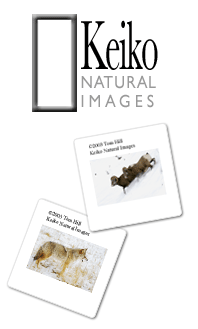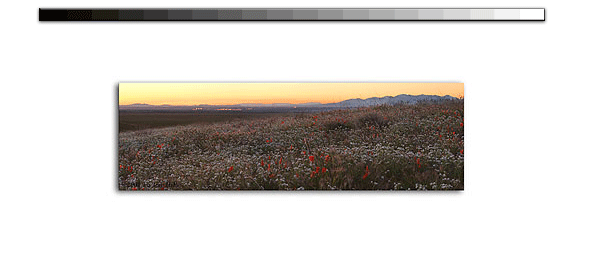|
8) Download your images frequently After every shooting session, I head back to the camper, car, hotel& to down load my images from camera to (insert your preferred storage medium here). After the download, I ensure a good portion of the images are readable by my image browsing softwareI use iviesbefore I clear the camera. There are two things going on here by doing these downloads. First, it takes images off your most vulnerable piece of equipment--your camera. It will happen. Someday youll make awesome images in the morning and forget to download the images. In the afternoon, your camera takes an untimely demise by taking a swim in a very photogenic river. Not only is your camera lost, but the morning images are lost as well. Look at this as an opportunity to reduce the risk you images are exposed to. Second, I make a quick review of the images to help my planning for the afternoonIve got more on this on rule #9. The review is a good opportunity to assess the status of my equipment to make sure everything is working correctly. Its a health check. So, youre wondering how you can possibly do all these downloads? Its easy. You cant spend a whole day shooting because the noon-day light probably isnt that great. Okay, most of the time you wont be shooting all day, so there must be some dead times. I use the early afternoon on my shooting excursions as the opportunity to download, health-check my equipment, assess my morning work, and take a nap. Lunch is usually squeezed in there as a sidelight. Who needs food when youre shooting, right?
9) Backup, backup, backup Very simple advice everyone should practice. This applies whether youre out in the field or at home. Make backups on more than one drive or recordable media. Hardware failures will happen and you dont want to loose a whole years worth of images simply because you didnt practice a simple backup strategy. On your trip, you dont want a simple hard drive failure to ruin what youve already accomplished. Backup, Backup, Backup& Along with my laptop, I take a 30gig hd on my trips. Its an extremely portable Firewire model that draws its power through the Firewire cable. Every other day, I copy my trips images from my laptop to the portable drive. I also backup my most important filesmoney, photo information&--the same way. While almost loosing my laptop on a trip was the closest Ive come to a major digital failure, backing all my previous images on that other hard drive wouldve minimized the hurt. Its prudent advice. While I have you, consider what you do at home. Dont place all your work on one system that may fail. I store my images three ways on two hard drives and CD-R media. I copy all my RAW images from every trip on one hard drive. Right now its a 60 gig drive thats rapidly getting too small. From there, every RAW or process image also gets copied on a CD-R. I know theres lots of concern about the long-archival characteristics of the media so consider this step a work in progress. To make this step really easy, Ive partitioned my largest 80gig hard drive into four parts--three 640mb sections and one really large section. As I work, I fill the smaller partitions and when theyre full, I burn a CD. Each of those CDs then get copied as an image to the largest section of my big hard drive. So, at the end of the day, my RAW images are copied on three different devices/media and the processed stuff is on two. For your info, I send my CDs over to a friends house to prevent the ultimate disaster of the house burning down. While I have yet to realize the benefits of this system. I consider this insurance for the time and effort of making the images. While I hope I never use my insurance, Im glad its there.
10) Review your images everyday Lastly, this is the most important field advice thats available only to digital photographers. The ability to daily review what youve shot to refine the next days work is extremely powerful for me. Many times I would be out in the field thinking I got what I wanted only to find out at the end of the day I missed the shot by oh so little. By reviewing what Id done, I could go out in the field to reattempt the image. This process is one step further then using that little LCD on your camera. One of the most important benefits of daily image review is your personal memory of the shot. You probably remember exactly what you did to make it so when the image doesnt quite work, you can assess what you did, compare it to the results, then determine what to do next. Its an extremely powerful learning tool where you make an assessment, realize the results, and compare the results to the original assessment, and then adjust. Initially, before learning to use the cameras LCD screen, I used the daily assessment as my opportunity to tweak my exposure compensation. Since then, Ive changed my compositional techniques and how I mechanically use the equipment to make an image. I learned to place my AF sensor on the shoulders of in-flight Sandhill Cranes instead of on their craniums. Being able to adjust techniques is kind of like training films for football players. They get almost real time feedback on their performance and make adjustments to make their plays. Reviewing your images is no different. It can make the difference between getting the type of images you want on a trip of a life-time or not.
|
|
|




